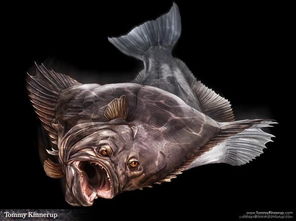Content:
When it comes to fishing, the use of floating lures can be a game-changer. These artificial baits mimic the natural movement of insects, fish, or other creatures that fish feed on, making them highly effective in attracting a variety of fish species. Whether you're a seasoned angler or a beginner looking to expand your fishing repertoire, mastering the art of floating lure fishing can elevate your fishing experience. Here, we delve into the essential techniques for using floating lures to catch more fish.
Understanding Floating Lures
Before diving into the techniques, it's important to understand what makes a lure float. Floating lures are designed with buoyant materials and weights that allow them to stay at the surface of the water. This feature is particularly useful for targeting fish that feed near the surface, such as bass, trout, and panfish.
Choosing the Right Floating Lure
The first step in successful floating lure fishing is selecting the right lure for the conditions and the fish you're targeting. Consider the following factors:
Species: Different fish species have varying preferences for bait types. For example, bass might be attracted to a floating lure that imitates a frog, while trout might prefer a lure that mimics an insect.
Size: The size of the lure should match the size of the prey that the fish are feeding on. Larger lures are suitable for larger fish, while smaller lures are better for smaller fish.
Color: The color of the lure can make a significant difference. Bright colors like red, white, and chartreuse are often effective in clear water, while natural colors or even black may be better in murky conditions.
Action: Some floating lures have a natural action that mimics the movement of real prey, while others require the angler to impart a specific action. Choose a lure that complements your technique.
Techniques for Using Floating Lures

Once you've chosen the right lure, here are some techniques to help you catch more fish:
Cast and Retrieve: This is the most basic technique. Cast the lure out, let it sink to the desired depth, and then retrieve it at a steady pace. Vary the speed and retrieve method to mimic different prey movements.
Jigging: Jigging involves a quick, erratic movement of the lure. This can be particularly effective for triggering strikes from fish that are suspended just below the surface.
Trolling: Trolling is a method where you move the boat at a slow pace while dragging the lure behind it. This can cover a lot of water and is effective for targeting fish that are spread out.
Pitching: Pitching is a technique where you cast the lure directly towards the shore or other structures and then work it back towards the boat. This can be effective for catching fish that are hiding near cover.
Twitching: This involves a quick, short pull on the line, followed by a pause. This mimicry of prey struggling can often provoke a strike.
Tips for Success
Read the Water: Observe the water conditions and the behavior of the fish. Wind, currents, and weather can all affect how fish react to your lure.
Adjust Your Technique: Be prepared to change your approach based on the fish's response. If they're not biting, try varying the retrieve speed, depth, or type of action.
Stay Patient: Floating lure fishing can sometimes be slow, so patience is key. Wait for the fish to react to your lure rather than forcing it.
Practice: Like any skill, fishing with floating lures improves with practice. Spend time on the water experimenting with different techniques and lures to find what works best for you.
In conclusion, floating lure fishing can be a rewarding and enjoyable way to catch fish. By understanding the basics, choosing the right lure, and mastering the techniques, you'll be well on your way to becoming a proficient floating lure fisherman. Happy fishing!












